The Importance Of Behavioural Segmentation: Betting Industry
The digital betting and gaming industry is one that is becoming more and more challenging for brands as the market continues to grow and evolve. This is on top of the fact that players are becoming more demanding in what they expect from your company.
But why?
The simple answer for both is technology.
The continuous growth in technology plays a huge part in the evolution of this sector. We now have a number of tools, available at our disposal, that provide deep data analytics, marketing automation, and content personalisation.
Your users expect the content that they receive to be highly personalised, add value and create meaningful experiences that attract them to play. And hyper-personalisation is what you should aim to achieve because, unfortunately, marketing to the masses is not going to bring you the long-term, loyal customers that you desire.
Now, you’re more than likely wondering what steps you need to take in order to give your users exactly what they want.
Being successful in providing tailored content all comes down to market segmentation.
What is Market Segmentation?
I’m going to keep this brief because we have an extensive page full of all things market segmentation that you can check out right here.
In a nutshell, market segmentation involves arranging your customers into smaller groups based on a range of various commonalities and shared characteristics. This then allows you to target each segment with relevant offers and content that best suit their needs. It’s all about reaching the right people, in the right place and at the right time.
But as with most things in marketing, there is no one-size-fits-all approach. How you segment your contacts is down to a number of factors that are unique to your business and industry. In this post we want to focus on the world of betting and gaming and behavioural segmentation, so let’s get stuck right in…
Why Betting & Gaming Marketers Need to Use Behavioural Segmentation
The four main types of segmentation are demographic, geographic, psychographic and behavioural. Whilst each one has its purpose and benefits, in the betting and gaming industry, behavioural segmentation is the one you really want to hone in on if you are serious about identifying your highest-value prospects.
And before you wonder, behavioural segmentation is the process of segmenting your users based on their actions, or behaviour, within your app or game. It’s about using what you learn from your users’ behaviour to create better, more personalised marketing strategies in order to offer optimised experiences for your wonderful users. This form of segmentation is so powerful, and its use cases are endless.
By tracking how each individual user is behaving on your website or app via tools such as Google Analytics, Hubspot or Hurree, you can gain that all-important knowledge that will help to guide your content creation and tailor it towards each segment.
With this data, marketers in this dog-eat-dog industry no longer have to make outdated assumptions like “women only play online bingo” and “men aged between 20 and 35 mostly bet on football and soccer matches”. Because, whilst there likely is some truth in this, these vague statements simply are not “the norm” for every one of your players.
The 6 Sub-Categories of Behavioural Segmentation
In order to help better understand the planning, decision, and buying journey of your customers, Salesforce has broken this form of segmentation down to 6 sub-categories:
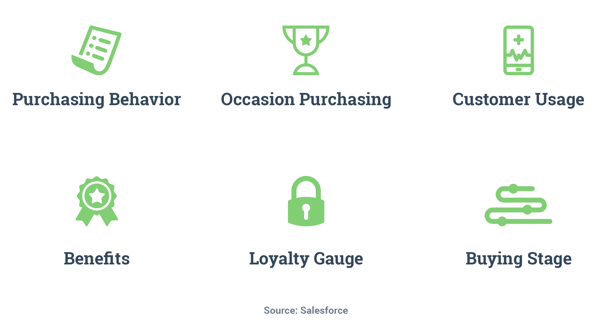
So let’s take a look at each one of these and see how they can be applied to the betting and gaming industry...
1. Purchasing Behaviour
This is all about the thought process a consumer has before making a purchasing decision. In the gaming and gambling world, this could involve the particular types of games your customer is drawn to playing for example, poker or online casino and slot games. Or, it could be that they only ever bet on a select few sports such as football and boxing, or horse racing and golf. Whatever the case may be, it’s important for you to seize this opportunity and utilise this information that’s right at your fingertips.
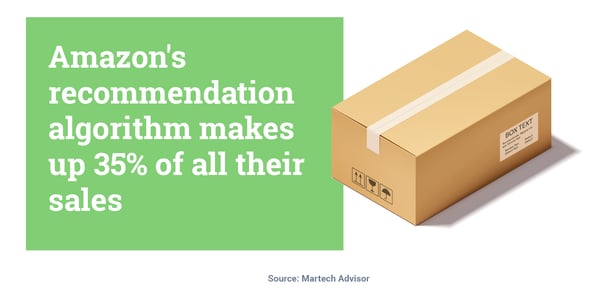
Take a leaf out of Amazon’s book, their algorithm that recommends products for you based on your past purchases makes up 35% of all their sales! So take a look at your behavioural data and make sure that the email or push notification campaign you’ve set up is personalised based on your users’ past purchases, and the interactions with your brand, and you’re sure to see a boost in your engagement rates and revenue.
2. Occasion Purchasing
How often do your players make a bet or play a game? Is it once, or twice a week? Is it once a month? Or maybe it’s just during yearly events such as The Super Bowl, Kentucky Derby or Cheltenham?
Understanding the rise and fall of your players’ purchasing behaviour throughout the year will give you a clear advantage when it comes to getting ahead of the seasonal trends, and planning a kick-ass marketing campaign to help further boost your revenue during this time.
3. Customer Usage
Understanding customer usage is so important. How you should market to the high spending, frequent-use players is totally different to how you should be marketing to the irregular, low spending players.
Your high-spending customers need and deserve extra attention from you, and they want it too! 82% of consumers say they are willing to share their data with you in order to receive personalised recommendations. So if they are in your app or on your website spending money on a weekly basis then it’s likely they won’t mind being contacted by you more regularly, provided the messaging is personalised, relevant and valuable to them.
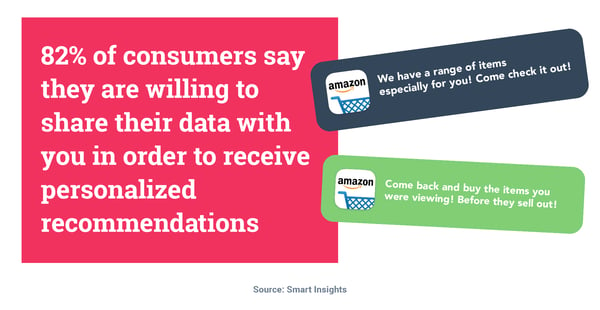
When it comes to your lower spending players, it’s best to not contact them quite as frequently. They don’t place bets or play online games as often, so chances are, they don’t want to hear from you every other day. Try hitting them with a free £10 bet to see if that encourages them to play more often, and take it from there. Reaching out to them too much will only get on their nerves, which will, in turn, result in a swift delete of your app from their device (obviously not ideal).
4. Benefits
This sub-category answers the questions of why your players buy from you. What benefits do you offer to them as players with your company? Do you offer better odds in comparison to your competitors or do they only play when you give them a free bet?
If you discover that a certain player only gambles with the free money you give them every few months, then you probably want to stop giving them free stuff and try a different tactic to convert them to a loyal, paying customer.
5. Loyalty Gauge
Identifying and treating your loyal customers like the Kings and Queens that they are is so important. Did you know that 80% of your revenue comes from just 20% of your customer base?! So if you aren’t looking after them… then your competitor will. It’s easy to forget about the loyal ones and focus your attention on gaining new customers. But with such a huge portion of your profits coming from your returning customer base, then this is not an advisable tactic!

One idea to show your loyal users how much you appreciate them could be by setting up some form of loyalty scheme that allows them to get a free bet every time they spend X amount, or giving them better odds than what’s on offer to the rest of your “non-VIP” users. It's things like this that will keep them coming back.
6. Buying Stage
Also known as the life-cycle stage, this involves where exactly your user is in the customer journey. You might find they have signed up to your company as a result of a social media ad but have yet to place a bet. Each user is at a different life-cycle stage and how you should speak to them based on this is very different.
1. Awareness
These are the non-users who haven’t signed up or downloaded your app. At this stage, you want to drive new registrations and first time deposits with an eye-catching offer or even a free bet via advertising on social media or other places across the web.
2. Consideration
At this stage, you now have that all-important app download, but they still might have failed to register a new account. Or, they might have registered an account by now but failed to make a deposit or place a bet. Now’s the time to reach out with the following push notification…
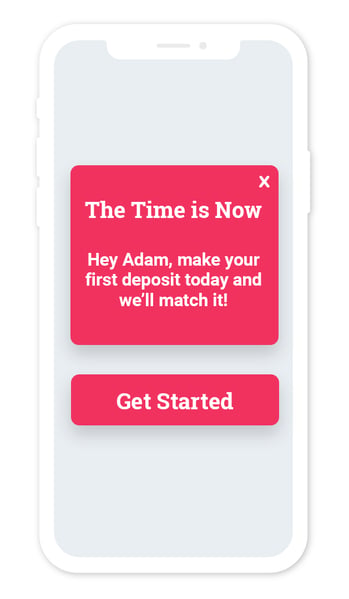
3. Purchase
This is the point where they have placed a bet, played an online casino game or made a deposit. Keep the momentum going with similar offers and content based on their purchase behaviour. They’ll thank you for this and it will continue to strengthen the relationship between you and your brand.
4. Advocacy
Word of mouth plays a huge part in the sales of many brands, hence the rise of social media influencers. Use your current players to help boost your profitability by encouraging them to share your app with their friends. Setting up a referral scheme where they get a friend to register an account and, as a result, receive a free bet in return, usually does pretty well.
5. Loyalty
As was mentioned earlier, retaining loyal customers is so much more important than acquiring new ones. It’s all about quality over quantity. Keep the customers you have acquired coming back through targeted messaging, VIP offers and loyalty schemes.
And let’s throw another one in for good measure...
6. Re-engagement
These are your lapsed and dormant users who you want to re-engage. Using the data you already have gathered based on their past interactions with your app or website, send them odds or offers that’s hard for them to resist.
Conclusion
I’m sure I don’t have to tell you but human behaviour is dynamic; it is forever changing. So if you aren’t taking notice of it, you’re missing a real trick and your customers will move on and find a competitor that better fulfils their needs with more personalised and targeted communications. The data you need is there, you just have to leverage it.
Share this
You May Also Like
These Related Stories

How to Delight Your Customers Throughout The Buyer's Journey
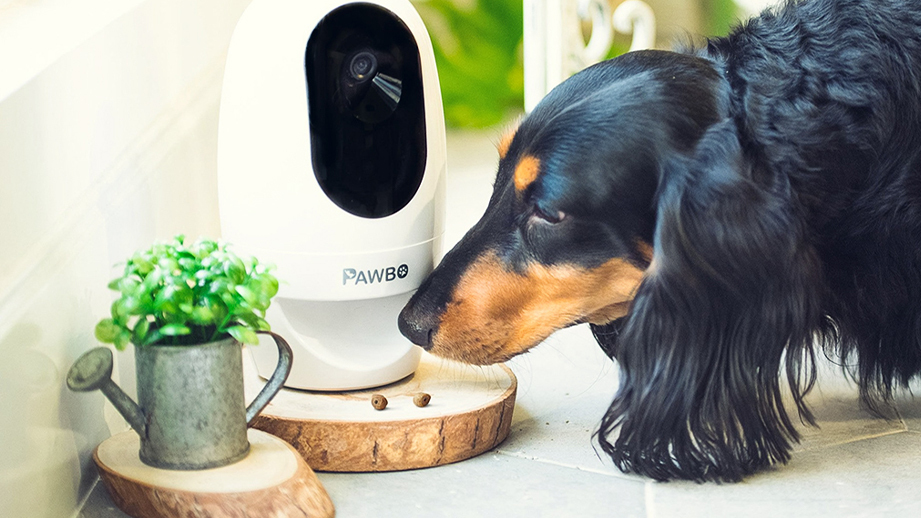
[Video] A Content Guideline to The 5 Stages of The Buyer's Journey



